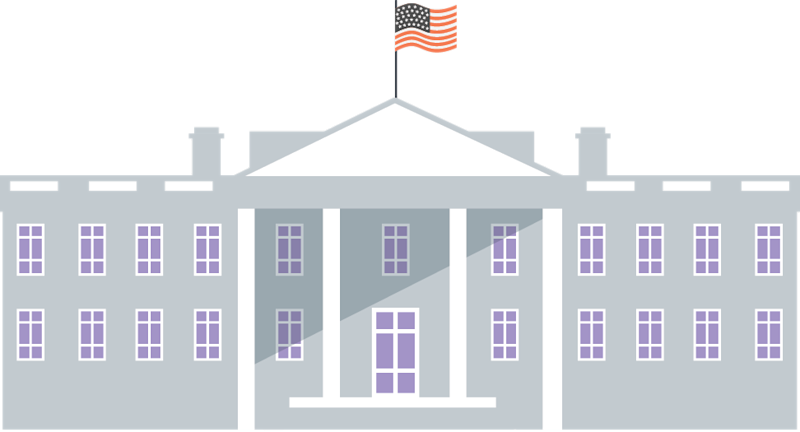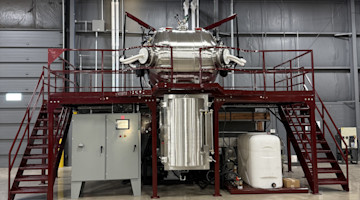President Donald Trump takes office backed by a Republican-controlled Congress eager to execute his "America First" agenda. His platform emphasizes his strong support for American manufacturing, promising to create a more business-friendly environment for U.S. companies to grow and prosper.
Tax Reduction
One of the most significant components of Trump’s platform is the extension of his landmark 2017 tax reform law, the Tax Cuts and Jobs Act (TCJA). The TCJA made the corporate tax rate cut permanent, but approximately $3.3 trillion in other tax cuts are set to expire by the end of 2027.
Several provisions in the TCJA are important to manufacturers:
Making individual tax cuts permanent:
The TCJA reduced the top individual rate to 37%, but under current law, this rate is scheduled to rise to 39.6% in 2026. Many manufacturers operate as Subchapter S corporations, meaning their income is taxed at the individual rate, making them vulnerable to this increase. Extending the individual rate cut, as well as extending deductions for pass-through entities, is a top priority.
Extending 100% bonus depreciation:
This provision allows businesses to immediately deduct the full cost of capital investments. Studies show that bonus depreciation has encouraged many companies to modernize and improve their productivity. The extension of this provision supports long-term investment in equipment and infrastructure.
Restoring R&D expensing:
By fully restoring the ability to immediately expense research and development costs, the administration aims to stimulate growth and innovation. Research from the National Science Foundation indicates that U.S. R&D spending has long been a key driver of productivity growth.
Retaining the increased estate tax threshold:
Under current law, the increased estate tax exemption is set to expire in 2025, potentially reducing the threshold for estate taxes by half. Keeping this exemption would provide relief to family-owned manufacturers who may otherwise face burdensome estate taxes upon transferring their businesses to the next generation.
Republican leadership is strategizing on how to pass tax legislation using the budget reconciliation process, which allows policies related to taxes and spending to pass with a simple majority vote in the Senate. Two challenges to passing a bill without any Democrats are overcoming the narrow majority margins and how to pay for the bill. The estimated cost of Trump’s tax proposal exceeds $5 trillion for the TCJA portion alone.
America First
A core component of the "America First" policy is the imposition of tariffs on imported goods. Trump has long advocated for tariffs as a means of protecting U.S. manufacturing and offsetting the cost of tax cuts. During his campaign, Trump promised tariffs of at least 60% on products from China, 25% on goods from Mexico and Canada, and a blanket tariff of 10% to 20% on imports from other countries.
While these tariffs could generate trillions in revenue, they would also raise prices for U.S. consumers and importers. Furthermore, tariffs risk provoking retaliatory measures from other countries, potentially escalating into a global trade war. According to estimates from the U.S. Chamber of Commerce, the trade war with China alone could cost the U.S. economy over $1 trillion in lost GDP by 2025.
Deregulation and Spending Cuts
In parallel to raising money through tariffs, the newly established Department of Government Efficiency (DOGE), led by Tesla CEO Elon Musk and tech entrepreneur Vivek Ramaswamy, has been tasked with eliminating wasteful government spending and red tape. Musk initially proposed cutting $2 trillion from the federal budget – approximately 30% of the previous year's $6.8 trillion federal budget. He has since indicated that trimming $1 trillion would be a significant achievement.
The administration could use executive orders to scale back programs like the $4 billion clean energy initiative included in the Inflation Reduction Act (IRA) and reducing manufacturing grants aimed at boosting U.S. chip production under the CHIPS and Science Act to help pay for Trump’s tax proposal.
Manufacturers can also expect a regulatory environment that favors businesses, particularly in emerging technologies, labor regulations, and climate change. Streamlining the regulatory process and reducing the burden on businesses will stimulate investment and job creation.
Now is an excellent time to engage with your elected officials on the Trump administration's agenda. Regular communication enhances your ability to influence decisions. If you need help contacting them, reach out to me at athomas@AMTonline.org.






